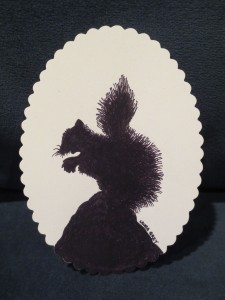You may have heard Jason Derulo’s song “Whatcha Say.” It went to #1 on the Billboard Hot 100 in 2009 and was Derulo’s first big hit, but the song was built around vocoded vocal samples from the song “Hide and Seek” by English singer, composer and producer Imogen Heap. The popularity of Derulo’s song was much greater than that of the song upon which its based, and to my mind that is a great shame, since Heap is one of the most inventive and appealing artists recording today.
Imogen Heap (or Immi, as she is often called by fans) is surprisingly little known in the U.S. despite having received four Grammy nominations and won one Grammy. As half of the musical duo Frou Frou she also had a song on the award-winning soundtrack to the popular indie movie Garden State.
Before becoming known as a solo artist, Heap and then musical partner Guy Sigsworth recorded as Frou Frou. Their song “Let Go” was one of the best things to come out of the 2004 Garden State soundtrack. It’s Imogen’s warm and breathy vocal you hear over the rich layers of electronica. With her lush washes of intricate sound, she gives the lie to those who think electronic pop must be cold and soulless. She often incorporates unusual effects and ambient sounds into her mixes, and since leaving Frou Frou she has composed, produced and performed on four solo albums.
As a teen Heap taught herself sequencing, music engineering, sampling and production as well as guitar and percussion instruments such as the Array Mbira (an expanded version of the small African original mbira with a more bell-like sound) and the Hang, a hollow steel percussion instrument. With these tools, her compelling, intimate voice and gift for beautiful melodies and rich harmonies, she has built an interesting repertoire of songs and a passionate fan base.
In return for her fans’ devotion, Immi gives exciting concerts featuring not only her hits but also on-the-spot improvised compositions created with looped sounds that she records of her own singing and playing as well as with sounds generated by the audience in concert. I saw her perform in Seattle during her 2010 tour and was moved by her decision to invite local musicians from every stop on her tour to audition with her. Heap then chose a few musicians from each location and had them open her concerts for her and perform a song alongside her. She also created a song with the audience at each venue and made every song available to help raise funds for local charities. She’s quite philanthropically minded and often raises funds for favorite charities around the world by holding benefit concerts featuring her music and that of others musicians.
Among her influences Heap lists Annie Lennox and Kate Bush, two other powerful singers from the UK with huge charisma, distinctive voices and strong associations with inventive electronic pop. Like them, Immi has created electronic music with great passion and soul. Her 2005 album Speak for Yourself is her most accessible album, full of lyrical, catchy tunes, and 2009’s Ellipse, which features the lovely song “First Train Home,” comes in two versions, the standard and a deluxe version which includes instrumental versions of all the tracks.
Of her work, Immi says, “I just love crafting and shaping sounds. Actually, many of the sounds that I work with start off as organic instruments — guitar, piano, clarinet, etc. But I do love the rigidity of electronic drums… I would record live drums, and then I would spend a day editing them to take the life out of them. I like to breathe my own life into these sounds, and I do try to keep the ‘air’ in the music. Some people think electronic music is cold, but I think that has more to do with the people listening than the actual music itself.”




